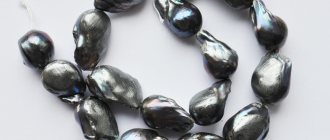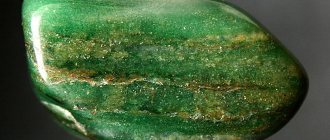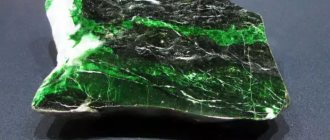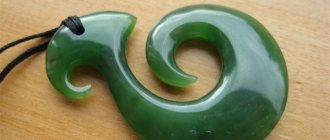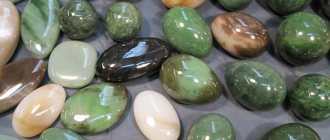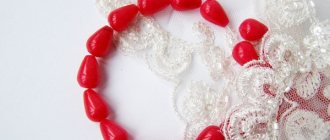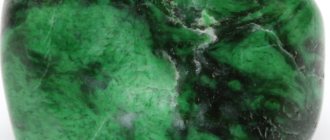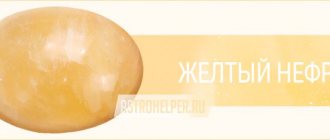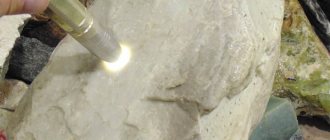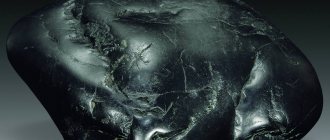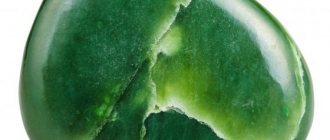Visual assessment
The easiest way is a visual assessment. If you look at jadeite, its structure will be granular. When magnified under a magnifying glass, you can see rounded grains.
Jade
Jade has a cryptocrystalline structure. And you won’t see such clearly defined rounded grains in jade. However, longitudinal fibers can be seen. In addition, jade is characterized by black inclusions, like black flies. Jade may not have any grain at all, and the fibers may vary slightly in color.
Nephritis
Which countries supply jadeite?
Jadeite is mined in many locations around the world, including: throughout Kazakhstan, near the Omi and Kotaki Mountains in Japan, along the Motagua River Valley in Guatemala, in San Benito County, California, and in the Ural Mountains of Russia.
However, the largest and most profitable source of jadeite is Myanmar (formerly Burma). Experts estimate that 70% of the world's jadeite supply comes from Myanmar mines. In other words, if you need jadeite, Myanmar is a great source!
What about jade? Let's explore how it is formed, what it is and where this gemstone comes from all over the world.
Hardness test
Let us immediately note that you can only check hardness on your own product. After all, no one will allow you to scratch a product that you have not yet purchased. Jadeite has a hardness of 7 on the Mohs scale, which is harder than jade. Therefore, if you take glass and try to scratch jadeite on the back of the jewelry, then nothing will happen to the jadeite, that is, there will be no marks, stripes or scratches. But the density of jade is 5.5 - 6 on the Mohs scale, and it can be scratched by glass. Therefore, if you are checking hardness, then scratch in a place where it will not be noticeable.
By the way, read this article too: How to distinguish rock crystal from glass
Main conclusions
1. Jade is a fibrous stone that comes in a variety of shades. Characterized by high strength and oily shine.
- The gemstone is replaced with serpentine, jadeite and other minerals with similar visual characteristics. Artificial fakes consist of painted glass and plastic.
- Visual, formal and mechanical methods help to distinguish a stone from a fake. However, only a specialist can accurately assess the authenticity of a stone. To avoid buying a fake, choose trusted stores.
Share your experience in determining the authenticity of jade and leave feedback in the comments.
Shine
Jadeite and jade have a completely different shine, although at first glance they seem to be the same. Jadeite has a stronger, glassy sheen, and it comes from the surface.
Jade
Jade has a more matte shine; it is often described as having a waxy shine. If you imagine the wax that remains after a candle, then approximately the same effect will be produced by the surface of polished jade.
Nephritis
Areas of application and care of jadeite
The gem is in demand among jewelers, but it is also used in other areas.
Jadeite jewelry is, of course, beautiful, but not every stone is suitable for jewelers. However, opaque and unsightly gems also have a use: the heavenly stone is a useful mineral.
Jadeite tiles are a valuable and very beautiful facing material. Chemists use heavenly stone to purify water; it filters heavy metal salts very well. Lithotherapists pay tribute to the healing properties of the gem; with its help they treat kidney diseases.
They knew that jadeite could be used for baths back in ancient China. Finishing from this gem not only looks very impressive, it also improves health. When heated, the mineral releases metasilicic acid, which rejuvenates the body.
If you have jadeite beads, rings or earrings, then it is better to follow some rules. Protect your jewelry from damage, heat, and chemicals. When going to the pool, it is better to remove it: chlorine, which is added to the water, has a bad effect on the gem.
The stone needs to be cleaned once or twice a year. To do this, rinse it with warm water and a little soap, then dry it carefully. Do not use detergents, as they may cause the mineral to permanently lose its structure.
Musical way
The Chinese loved jade because it made certain sounds. Jadeite has such an ability, but it is weakly expressed and is practically not felt by the ear. You can knock jadeite on jadeite, just like jade on jade. If you hear musical resonance, then with a high degree of probability it is jade, provided that all other factors also coincide.
Nephritis
Healing properties: what to expect from the green fellow jade
Just by the names that the mineral has received during its existence, one can draw a conclusion about its obvious abilities to affect health. It is believed that the stone is able to improve kidney function and enhance the effects of natural herbal medications. In addition, people believe that the stone will cope with:
- with liver diseases;
- toothaches;
- respiratory tract diseases;
- migraine;
- diseases of the cardiovascular system;
- insomnia.
Jadeite is also credited with beneficial properties associated with the restoration of male strength and reproductive function. With regular use, the stone will help strengthen the immune system and normalize blood pressure.
Fakes and imitations
If you purchased jadeite, and it turned out to be jade, then this is not the most offensive loss. After all, jadeite and jade are equivalent in nobility and quality of the stone. It is much more offensive to buy some kind of plastic, fake or stones that cost significantly less instead of jadeite and jade. This is what they call stones that imitate jadeite.
By the way, read this article too: How to distinguish natural onyx from a fake
Transvaal jade
The Transvaal Jade is a hydrogrossular breed. That is, in fact, it is opaque and has nothing to do with jadeite.
Australian jade
In fact, the name for Australian jade is chrysoprase. And although chrysoprase belongs to semiprecious stones, that is, it is also used for jewelry purposes, but their cost is significantly lower.
Chrysoprase
New jade
The new jade is called serpintin or its breed serpintinite. The cost of serpintine is much lower than that of jadeite and jade. Serpintine is used exclusively as a counterfeit raw material for the manufacture of boxes and figurines and is used much less in jewelry.
Serpintin
White jade
Finally, stones with names such as white jade, red jade, and purple jade are quartz that has been tinted in different shades. The cost of quartz is low because quartz is a rock-forming mineral and its amount is about 40% in all rocks. Therefore, it would be a shame to receive just quartz instead of jadeite or jade. In general, if you are making a purchase abroad, you should not trust the word jade, because jade can be jade and jade, or anything else. The proportion that there will be jadeite and nephrite is no more than 10%. If you are buying a product of significant price, quite expensive, be sure to request a gemological certificate so that you understand the nature of the origin of this stone.
What does the stone look like?
Real jade stone is a silicate with impurities that determine the shade of the mineral. Characterized by interweaving of amphibole fibers. This makes jade stones look like layered formations.
The natural mineral belongs to the first class of semi-precious stones, as it is characterized by a high strength index. In this case, the hardness is 6 points. If you throw a stone onto a hard surface, it will leave a dent in the surface. The specimen will not split into fragments.
The most common green gem found in nature. The gamut of the mineral varies from pale green to emerald. This stone also exists in other shades:
- white;
- gray;
- blue;
- red;
- black
The color of the stone depends on the amount and type of impurities.
Be sure to watch: How and where diamonds are mined
View this post on Instagram
Jade is the most revered stone in China (it is noteworthy that there are practically no deposits of it in the Celestial Empire itself) and one of the most ancient stones used by man to make jewelry
